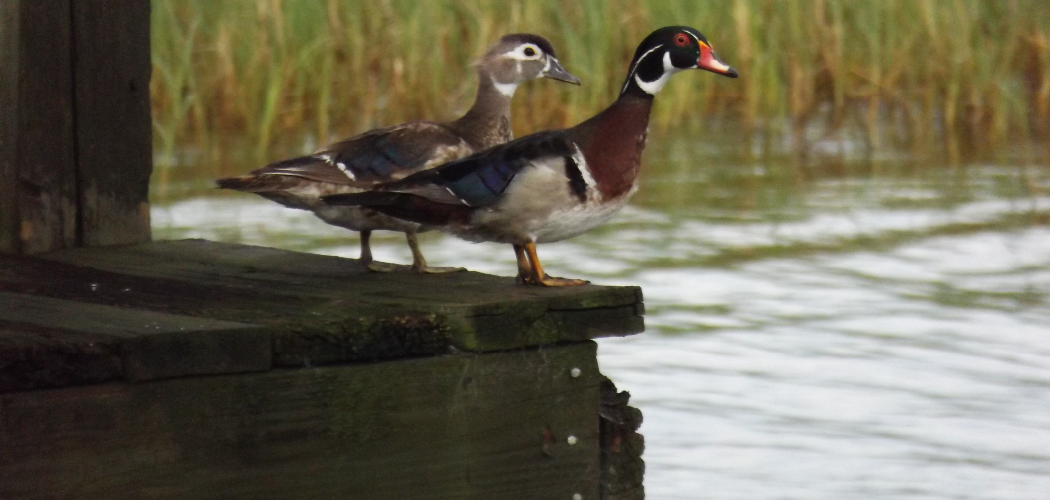Wood duck boxes provide essential nesting habitats for wood ducks, ensuring a safe and secure environment for breeding. Over time, these boxes may experience wear and tear due to weather, pests, or age, diminishing their effectiveness.
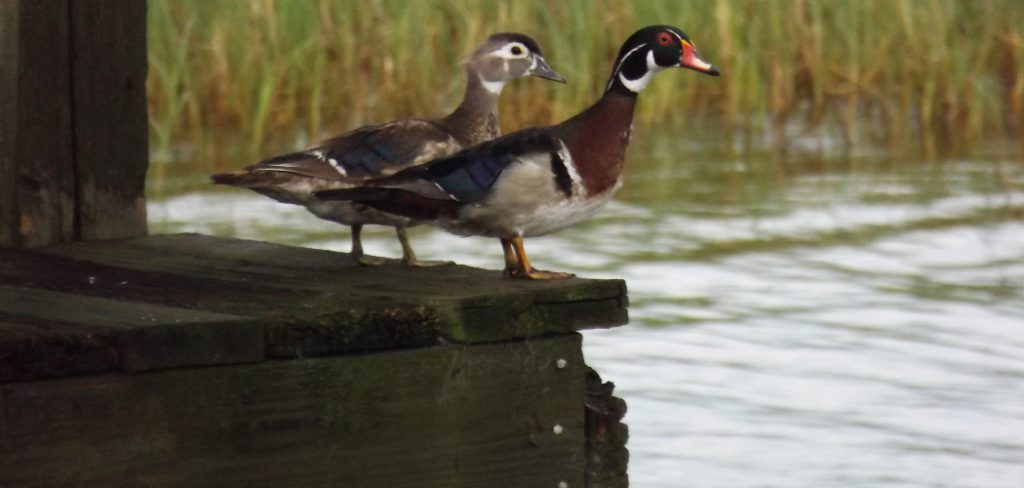
Regular maintenance and timely repairs are crucial to ensure the boxes remain functional and inviting for wood ducks. This guide will walk you through the steps of how to repair a wood duck box, helping to maintain a healthy population of these beautiful waterfowl.
Why Wood Duck Boxes Need Repair
Over time, wood duck boxes can degrade due to natural wear and tear, weather conditions, and wildlife interactions. Wooden structures are particularly susceptible to rot, warping, and damage from moisture exposure, which can compromise their structural integrity. Predators such as raccoons or snakes may also disturb the boxes, causing damage or making them less effective as safe nesting spaces. Additionally, old or poorly maintained boxes may accumulate debris, broken eggshells, or parasites, creating an unhealthy environment for nesting ducks. Regular inspections and timely repairs are essential to ensure the boxes remain functional and continue to provide a secure habitat for wood ducks.
10 Methods How to Repair a Wood Duck Box
1. Replacing the Roof
The roof of a wood duck box is one of the most vulnerable parts of the structure, as it is constantly exposed to the elements. Over time, the roof can become weathered, warped, or damaged due to moisture, wind, or the sun. To repair the roof, start by removing the old, damaged roof. Measure the dimensions of the box to ensure the new roof fits properly. Using durable, weather-resistant materials like cedar or treated plywood, cut the new roof to size. Attach it securely with screws, ensuring that there is a slight overhang to direct water away from the box. For added protection, consider using a waterproof sealant on the roof to prevent future water damage.
2. Sealing Cracks and Gaps
Wood duck boxes are made from natural materials, which can expand and contract with changes in temperature and humidity. This can lead to cracks or gaps in the box, which might allow predators access to the nest or make it difficult for the ducks to regulate their environment.
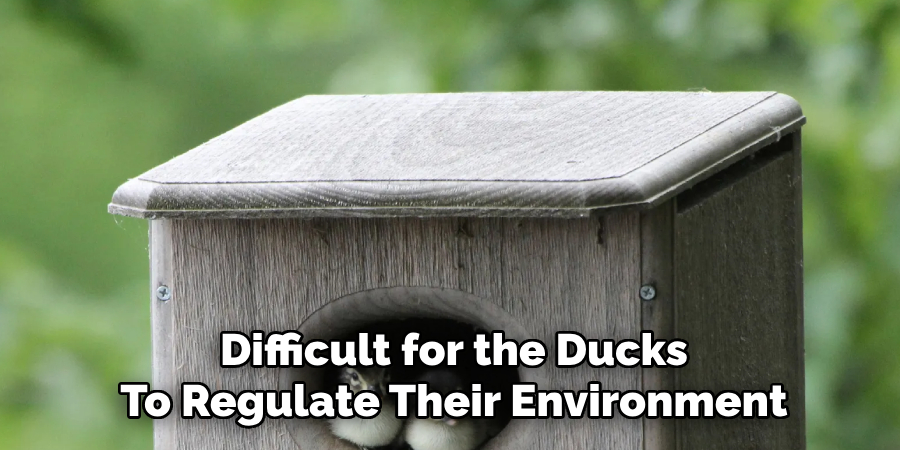
To repair these cracks, inspect the box carefully and identify any gaps. For small cracks, wood filler or caulk can be used to fill the spaces. For larger gaps, consider adding wood strips or patches to seal them effectively. Always use materials that are safe for the ducks and won’t pose a risk to their health, such as non-toxic wood fillers and sealants.
3. Replacing the Floor
The floor of the wood duck box can become worn out due to the weight of the ducks, weather, and moisture. If the floor is damaged, it can create an unstable surface for the ducks to nest, and water can seep through, leading to rotting. To repair the floor, begin by removing the old, damaged flooring. Measure the area and cut a new piece of wood to fit. It is essential to use wood that is durable and resistant to water damage, such as treated plywood or cedar. Secure the new floor into place using screws or nails. For added durability, you can apply a water-resistant sealant to the floor before installation to prevent future damage.
4. Strengthening the Box Structure
Over time, the structure of the wood duck box can weaken, especially if it has been in place for many years. This is particularly common if the box has been subjected to heavy winds or if it was not originally built with enough reinforcement. To strengthen the box, start by checking the joints and corners for any signs of looseness. If necessary, tighten screws or nails, and add extra corner brackets or reinforcements to ensure the box remains sturdy. You can also add a frame around the base of the box to give it more stability and prevent it from shifting or tipping.
5. Cleaning and Scraping
Regular maintenance is key to prolonging the life of a wood duck box. Over time, debris, droppings, and old nesting materials can accumulate inside the box, which can attract pests or cause health issues for the ducks. To repair this, remove all old materials and thoroughly clean the inside of the box. Use a scraper or a wire brush to remove any stubborn debris, and wash the interior with a mild soap solution to disinfect it. Avoid using harsh chemicals, as they could be harmful to the ducks. Once the box is clean, allow it to dry thoroughly before adding fresh bedding or leaving it empty for the next season.
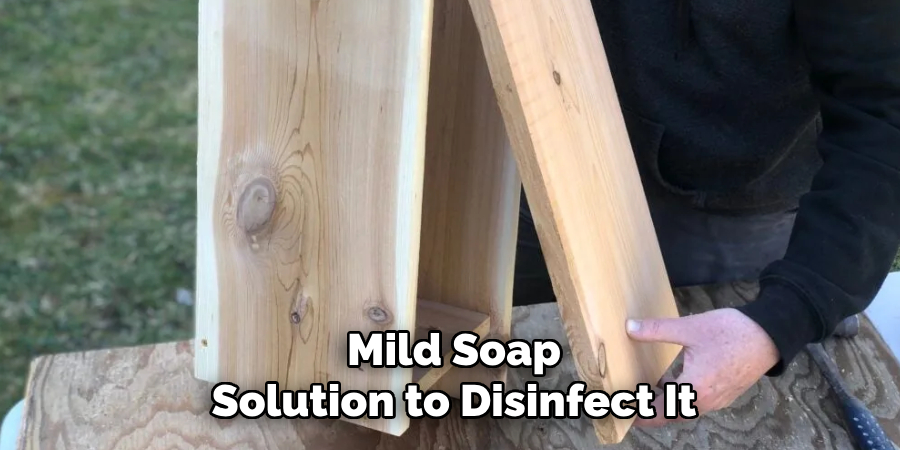
6. Replacing the Entrance Hole
The entrance hole is crucial for the ducks’ safety and access to the box. Over time, the hole can become enlarged or damaged, making it easier for predators to enter or causing the box to lose its insulation properties. If the entrance hole is too large, you can repair it by inserting a new piece of wood around the hole, which reduces its size. Alternatively, if the hole is cracked or jagged, it can be carefully sanded or reshaped. Ensure that the entrance hole is the proper size—about 3 to 4 inches in diameter—to allow wood ducks access while keeping out larger predators.
7. Replacing the Mounting Pole or Stand
The stability of the wood duck box depends on how securely it is mounted. If the pole or stand supporting the box is damaged, it can affect the box’s positioning and safety. To repair or replace the mounting system, start by checking the pole for any signs of wear or rot. If the pole is unstable, it may need to be replaced entirely. Remove the old pole and install a new, sturdy one made of metal or treated wood. Ensure that the pole is tall enough to keep the box above the reach of predators but also allows easy access for monitoring. Secure the pole firmly in the ground or on a sturdy base to prevent swaying.
8. Adding Predator Protection
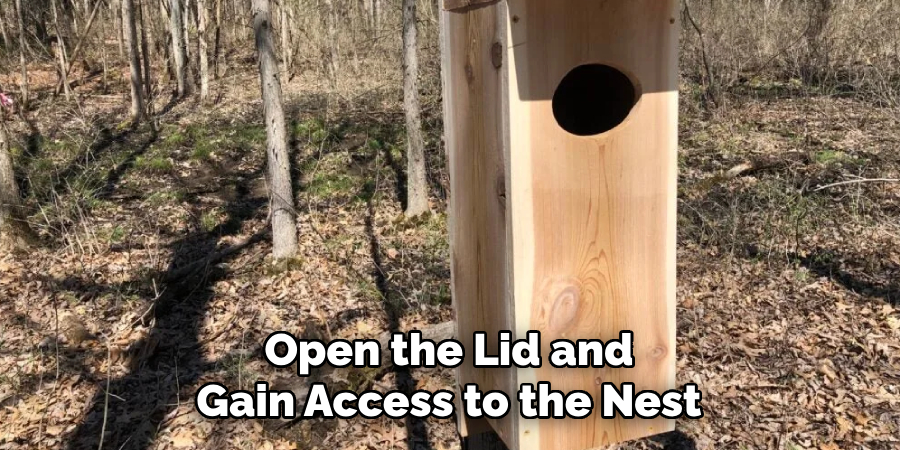
Predators, such as raccoons, squirrels, and snakes, can often gain access to wood duck boxes, especially if they are not adequately protected. Adding predator guards to the box can help prevent these animals from accessing the nesting area. You can install metal predator guards around the entrance hole, which are designed to prevent animals from widening the hole or climbing into the box. Another option is to add a baffle to the pole or stand that the box is mounted on, which makes it difficult for climbing predators to reach the box. Ensure that the baffle is positioned high enough to deter raccoons and squirrels but low enough to allow the ducks to access the box safely.
9. Reinforcing the Lid or Hatch
The lid or hatch of a wood duck box provides access for cleaning and monitoring, but it also needs to be secured to prevent predators from lifting it. Over time, the hinges or locking mechanisms can become loose or damaged. To repair the lid, check the hinges to ensure they are securely attached. If they are worn out, replace them with new, sturdy hinges that will withstand the elements. Additionally, consider adding a latch or lock to keep the lid securely closed while still allowing for easy access during maintenance. This will prevent predators from being able to open the lid and gain access to the nest.
10. Enhancing Ventilation
Proper ventilation is crucial for keeping the interior of a wood duck box cool and dry. Poor ventilation can lead to excess humidity and mold growth, which can create an unhealthy environment for the ducks. To enhance ventilation, drill small holes in the sides or top of the box to allow for air circulation. The holes should be positioned high enough to allow heat to escape but not so large that they compromise the box’s structural integrity or allow predators to enter. If the box has become too stuffy or hot, adding additional ventilation will improve the comfort and safety of the nesting ducks.
Things to Consider When Ventilating Duck Nesting Boxes
Location of Ventilation Holes
Ensure that ventilation holes are placed high on the nesting box to allow hot air to escape without exposing the eggs or ducklings to drafts or predators. Proper placement is key to maintaining a balanced internal environment.
Size of the Holes
The ventilation holes should be small enough to keep predators, such as snakes or rodents, from accessing the box. Typically, holes of about ¼ to ½ inch in diameter are sufficient to improve airflow without compromising safety.
Climate and Weather Conditions
Consider the local climate when planning ventilation. Areas with hotter temperatures may require additional holes, while colder regions may need fewer to retain warmth inside the box.
Inspection and Maintenance
Regularly inspect the ventilation holes to ensure they remain unobstructed. Over time, debris, such as dirt or nesting materials, might block airflow, reducing ventilation efficiency.

Conclusion
Proper ventilation is a crucial aspect of maintaining a functional and durable box. By carefully designing and maintaining ventilation holes, you can ensure optimal airflow, preserve the structural integrity of the box, and extend its lifespan. Regular inspections and the use of high-quality, weather-resistant materials will help protect the box from environmental wear and tear, ensuring it serves its purpose effectively for years to come. So, there you have it – a quick and easy guide on how to repair a wood duck box.

